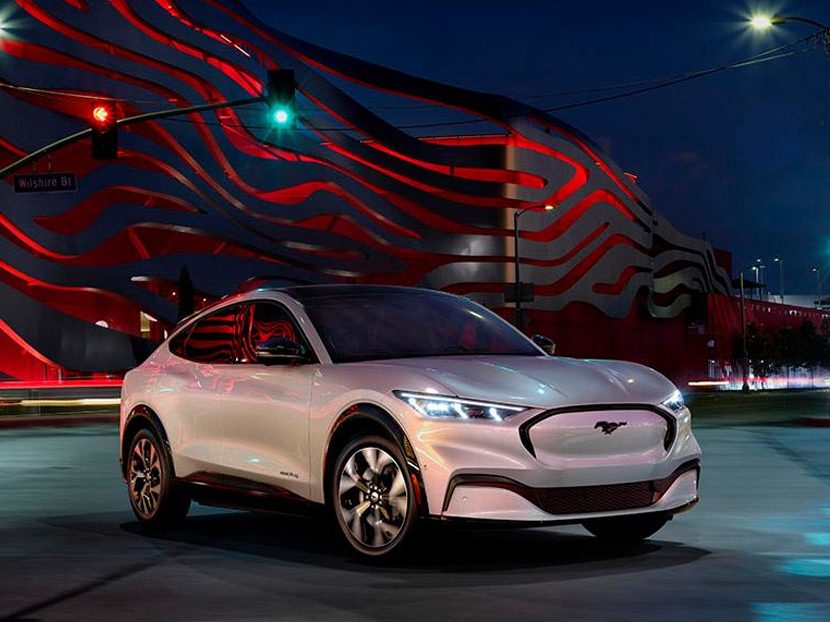The Future of Electric Vehicles
If engineering superiority and cultural stigmatism don’t persuade you, the compelling economics likely will.

Even if you think electric vehicles and fleets are nonsense, I hate to say it, but I’m guessing that by the end of this decade, you will be riding in an EV.
From an engineering standpoint, electrification of transportation is a fundamentally logical and overdue evolution. Culturally, polluting gas car owners may soon be regarded like smokers in North America: isolated as dinosaurs by family and friends, pressured as laggards by regulators, increasingly seen as out of sync with the modern world by strangers.
If engineering superiority and cultural stigmatism don’t persuade you, the compelling economics of electric vehicles likely will.
A Truck or a Spaceship from an Eccentric CEO
Jokes aside, in my opinion, one of the most symbolic incidents in 2019 was the November launch of Tesla’s Cybertruck. More than any single event, it signaled the beginning of the 2020s and the clean energy revolution.
Not only did a successful electric vehicle company serve notice that it would target a share of the (younger) American pickup truck market — one of the most lucrative segments in the global automotive business — but it simultaneously changed the sector by redefining what a pickup truck could be. It was followed by 250,000 customer Cybertruck reservations, proving that ever-controversial Elon Musk, Tesla and electrification will probably be successful in numerous automotive segments.
I’m describing this with thinly veiled enthusiasm, but not everyone shares my positive reaction. Many were unimpressed on the day it happened, and many have since said this Cybertruck is not for them.
There are also, of course, the hordes of obsessed Teslarati who voted with their wallets and described it as groundbreaking. The important point is that almost nobody lacks an opinion. Almost nobody, especially in America, can completely ignore this truck, this company or the unstoppable transformation from the internal combustion engine (ICE) to the electrification of transportation.
And yet, from the perspective of real-world economics, there may have been an even more significant commercial vehicle event during September of last year. Jeff Bezos, the globe’s wealthiest man, placed an order with a relatively unknown vehicle manufacturer (except in electric circles) for no less than 100,000 fully electric delivery vehicles. For context, the biggest electric vehicle fleets in the world, outside of China, are a few thousand trucks or cars.
Rivian, the company that got the Amazon order, immediately purchased an old GM plant in Normal, Ill., primarily to fill this 100,000-vehicle order, which will likely become hundreds of thousands of vehicles.
If the world’s richest entrepreneur just shifted to an electric fleet, you can be reasonably certain he didn’t do it strictly out of concern for air pollution. As I’ve mentioned before, New York City’s 600 electric vehicles have well-documented savings of 80 percent on fuel and 65 percent on maintenance.
Simple Engineering, Complex Electronics
Is it really a logical evolution in terms of engineering? Essentially, an EV is a capable computer controlling a simple battery-powered golf cart drive train. Its mechanical simplicity is a modern, elegant solution to numerous challenges facing global automotive manufacturing, including carbon emissions.
Its connection “over the air” to an artificial intelligence ecosystem and the journey to autonomous navigation are the obvious next steps in smart electronics. They answer traffic gridlock, the integration of personal and public transportation, the marriage of smart home and smart car, and contemporary consumer demand for greater personal security, family entertainment, simplified communications and a host of other computational functionalities.
Indeed, the Luddites at the dealerships who won’t stock EVs because they see the aftermarket disappearing are stuck in the past and are not seeing the bigger picture. If they play their cards right, they transform from grease pits to app stores.
I recently read about a company developing an autonomously driven work-sleep-travel pod for tomorrow’s road warriors. It’s the merging of transportation, communication, security and housing.
History’s Most Significant Economic Disruption
The global shift to clean energy will compare to the industrial revolution and the information age in terms of the magnitude of impact on society. And the key driver for change, the builder of the necessary political momentum resulting in scores of critical industry disruptions by cleaner solutions, will be the electrification of road vehicles for personal and business use.
Why? Because America still loves the car. And the United States, as well as China, lead global change. Road vehicles are the most culturally visible of human choices made within the technological landscape and the most influential on our collective psyche. For most people, a car is the second most expensive consumer purchase they make in their lifetime — after their house.
In the future, millennials may choose more car sharing rather than personal ownership, but no matter how good virtual reality and the Internet become, humans will always find reasons to be mobile. We’re industrious, curious explorers by nature. We’re on the move. That’s unlikely to change. And if all the cars go emission-free, the momentum will be there to ask why all the other transportation, construction and power generation can’t be as well.
The Tesla Cybertruck and Amazon delivery van order, combined with numerous other events in the recent past, underscore that the “ICE age” is coming to an end. A week after the Cybertruck reveal, Ford introduced the Mustang Mach-E, an electrified SUV based on the iconic Ford Mustang, just in time for the roaring 2020s.
Along with the Tesla Model 3 and Model Y, and numerous other electric cars pouring into the marketplace, there seems to be little doubt that a significant shift is coming. More recently, a report surfaced that Ford will work with Volkswagen and its smaller drivetrain on a “baby” electric Mustang to add to the line.
But how significant a shift? Is total electrification of personal transportation a prediction perhaps too outlandish? I meet a couple of people every month who say they’re not planning to buy an electric vehicle, although few of them are younger than 55. But I hear dozens who say their next vehicle will be electric.
The Facts
Anecdotal evidence aside, the facts supporting the disruption are undeniable. Global sales of EVs were about 100 vehicles in 2007, but by 2017 they were more than one million. In 2019, EV sales were around 2.8 million, according to Frost and Sullivan. On U.S. roads today, there are about 1.3 million electric vehicles. U.S. sales in 2019 were approximately one million units.
Car and truck sales in the United States were about 17 million, so the light truck and SUV markets are going to be a crucial part of the EV story in this country. Tesla will go into production on the Model Y SUV this year.
In Germany, as in many places, overall vehicle sales have declined while electric vehicle sales keep growing. The result is that EVs now capture about 5 percent of Germany’s new car market. In China, the number is similar, while in California, it is quickly rising and is expected to hit 10 percent soon. A similar scenario is unfolding in the Netherlands and Denmark.
The market share leader in EV car sales is Norway at about 60 percent. Norway’s success (as well as the Netherlands) is attributed to strong government commitment to incentives and regulations. This begs the question: What happens as regulations tighten?
One of the untold stories about the electric vehicle market is that in places such as Europe, slow-changing conventional car companies are squeezed financially because they are not meeting new emissions regulations. Fiat is paying hundreds of millions of dollars to Tesla under a deal allowing it to buy clean vehicle credits and achieve compliance.
Other legacy manufacturers are facing similar problems, not to mention lawsuits over the diesel emissions-cheating scandal and the numerous challenges with established ICE-oriented supply chains that limit new ways of thinking about vehicle production, service and marketing. The car business is changing dramatically because the product is so different. It’s a computer on wheels.
Still, they are trying. Ford announced that next year it will introduce an electric F-150 (the best-selling vehicle in the United States), and has plans to build an electric line for Lincoln, with help from Rivian. GM is setting up an electric vehicle battery plant in Ohio. Volkswagen says it will launch 70 new electrified models in the next seven years and is already converting one of its European factories to produce up to 330,000 electric vehicles per year.
BMW is building an electric car plant in China. German carmakers are introducing numerous models, plus a 250-kW, fast-charging system. They are trying to retain what they have after Tesla began outselling them, built a Gigafactory in China in just 10 months, and announced another near Berlin, which may be completed this year.
One of the storylines legacy automakers and oil barons promoted for a while was that electric cars cost more to build.
However, Tesla’s robotic factory is quite profitable, with a reported gross margin on cars in excess of 30 percent. Volkswagen recently said the ID.3 electric car is 40 percent cheaper to build than an e-Golf (an early electric VW). The Cybertruck, as currently designed, is actually quite inexpensive to make and still incredibly capable, compared with today’s pickup trucks.
Electric School Buses, Freight Trucks
Electrification in other transportation segments is advancing quickly. The world’s buses, school buses, police vehicles, courier and government fleets will almost certainly all be electric within 10 to 15 years if today’s order trends hold up. And there’s no reason to think they wouldn’t.
Tesla, Neuron EV, Nicola, Volvo, Mack and other semi-truck companies are busy developing electric, self-driving freight trucks and super-charging systems for them. The scooter companies in Italy and America and the three-wheeler leaders in India and other parts of Asia are all going electric.
On a longer horizon, trains, airplanes and container ships will use cleaner systems. Some might involve hydrogen.
I guess the point of this column is that EVs are no longer “nonsense.” Their inevitability from an engineering perspective, their cultural and regulatory necessity, and their economic advantages all point to increasing adoption rates. The only real question at this point is how fast will electric vehicles make the internal combustion engine obsolete?
As an environmentalist, I should end this piece by asking you to buy an electric vehicle during 2020. But I respect the opinions of readers, so instead, I will ask you to test-drive a fully electric vehicle. And please let me know what you think.





